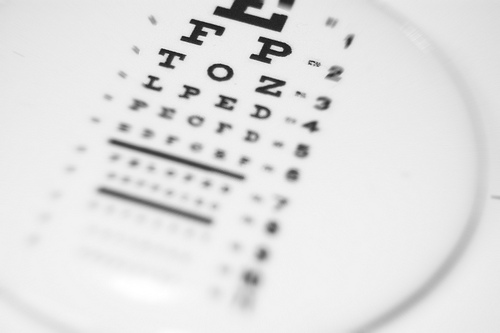The number of Americans with vision loss is rising dramatically each year.
Each decade, America is seeing more and more individuals who are beginning to suffer from non-refractive visual impairment. Whether this is due to vision problems such as cataracts or glaucoma, or simply the regular vision side effects that often accompany the aging process, the number is only expected to increase as a large amount of baby-boomers enter into their senior years in the short future―the age at which many of these vision problems begin to effect daily life.
However, many doctors are beginning to think that a new disease is to blame for the increasing rates of vision loss in Americans.
According to research unveiled Monday in the Journal of the American Medical Association, the rate of non-refractive visual impairment has jumped 21% between 2005-2008 from 1999-2002. In total, about 2.15 million Americans aged 20 and older suffer from non-refractive visual impairment, and a new study has found that increasing diabetes rates may be to blame for some of this vision loss that is not correctable by glasses.
One of the main reasons why diabetes is often linked to vision loss is because, even if the disease is treated correctly and early on, it can still cause cataracts to form in the eyes. This causes the blocking of light and decreased vision, often requiring surgery to fix. Diabetes can also lead to increased fluid in the retina, causing vision loss or new blood vessels to grow within the eye, which can damage the retina.
Unfortunately, as the number of Americans with diabetes continues to grow―18 U.S. states had at least a doubling of those living with the disease since 1996―so does the amount of vision loss among those in the United States.
Just how quickly is the rate of non-refractive visual impairment growing in the U.S? Researchers in the study looked at data from the National Health and Nutrition Examination Survey in 1999-2003 and 2005-2008, which included a well-represented sample of the American population. Analyzing this data, they found that the rate of non-refractive visual impairment rose from 1.4% in 1999-2002 to 1.7% in 2005-2008.
Among this data, the study also showed that people in their 20s and 30s were experiencing the highest amount of vision loss, with non-Hispanic whites aged 20-39 having a shocking 40% increase. For those in that age group who also suffered from diabetes for 10 or more years, the rate more than doubled from 0.3% to 0.7%.
The results of this survey are alarming as the number of Americans suffering from diabetes continues to rise in the United States. It is important that we do everything we can in order to prevent diabetes in our homes and in our family: so, stay active, exercise, watch what you eat, and keep your weight down. Those who are diagnosed with this disease also need to receive regular vision checkups to treat any vision problems that may develop.
To schedule your vision consultation today and ensure that vision loss is not a problem that will affect your future, be sure to contact OCLI today.

